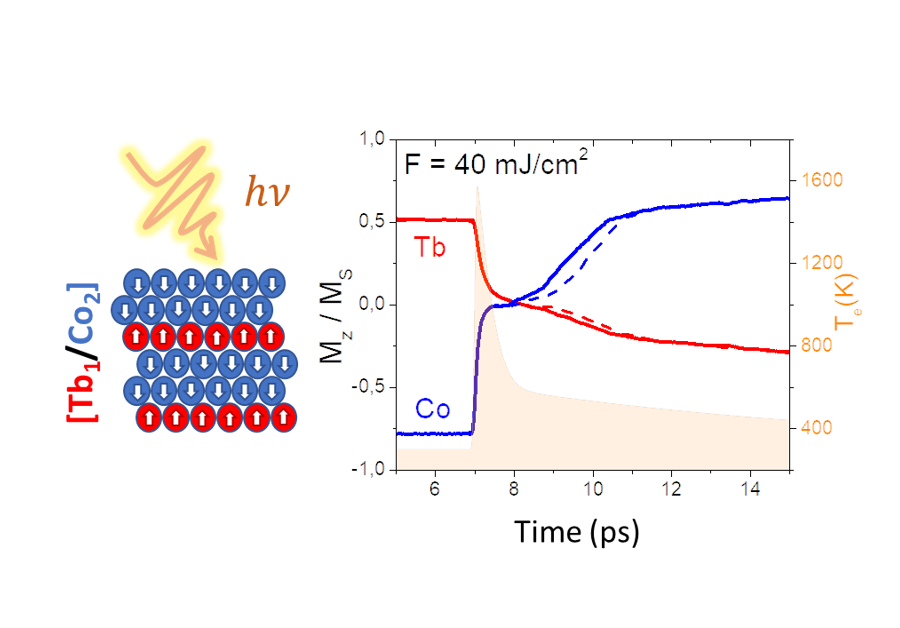Atomistic spin simulations have been carried out to study the probability of all-optical switching of [Tb/Co] multilayered thin films. Playing with the composition of the sample, the material parameters and the fluence of the laser pulse we have shown the possibility to get single-shot all-optical switching.
Since the first experimental observation of all-optical switching phenomena, intensive research has been focused on finding suitable magnetic systems that can be integrated as storage elements within spintronic devices and whose magnetization can be controlled through ultra-short single laser pulses. We have developed an atomistic spin solver coupled with a two temperature model to be able to simulate the magnetization dynamics driven by ultra-short laser pulses. The multilayered structures are based on alternating n monolayers of Tb and m monolayers of Co. The model allowed to have the thermal variation of the magnetization of each sublattice as well as the magnetization dynamics of [Tbn/Com] multilayers upon incidence of a single 50fs laser pulse. In particular, the condition to observe thermally-induced magnetization switching was investigated upon varying systematically both the composition of the sample (n,m) and the laser fluence. The samples with one monolayer of Tb as [Tb1/Co2] and [Tb1/Co3] are showing thermally induced magnetization switching above a fluence threshold.
[Tb1/Co2] magnetization reversal driven by single laser pulse of 50fs and 40mJ/cm2 fluence. Probability of switching depending on the fluence and damping parameter λ. The deterministic switching range is indicated by the yellow rectangle.
The reversal mechanism is mediated by the residual magnetization of the Tb lattice while the Co is fully demagnetized in agreement with the models developed for ferrimagnetic alloys. The switching is however not fully deterministic but the error rate can be tuned by playing with the damping parameter. Increasing the number of monolayers the switching become completely stochastic. The intermixing at the interfaces Tb/Co appears to be also a promising solution to reduce the stochasticity.
These results predict for the first time the possibility of thermally induced magnetization switching in [Tb/Co] multilayers and suggest the occurrence of sub-picosecond magnetization reversal using single laser pulses. Preliminary experimental results performed by our collaborators from SPICE project are in line with the simulations.
Teams: Theory and Simulation, MRAM
Collaboration: Radboud University (Nijmegen, Netherlands)
Funding: H2020 FET-Open Grant Agreement No. 713481 (Project SPICE)
Further reading: All-optical spin switching probability in [Tb/Co] multilayers, L. Avilés-Félix, L. Farcis, Z. Jin, L. Alvaro-Gomez, G. Li, A. Kirilyuk, A. V. Kimel, Th. Rasing, B. Dieny, R. C. Sousa, I. L. Prejbeanu, and L. D. Buda-Prejbeanu, Sci. Rep. 11, 6576 (2021).
Contacts: Liliana Prejbeanu, Lucian Prejbeanu

